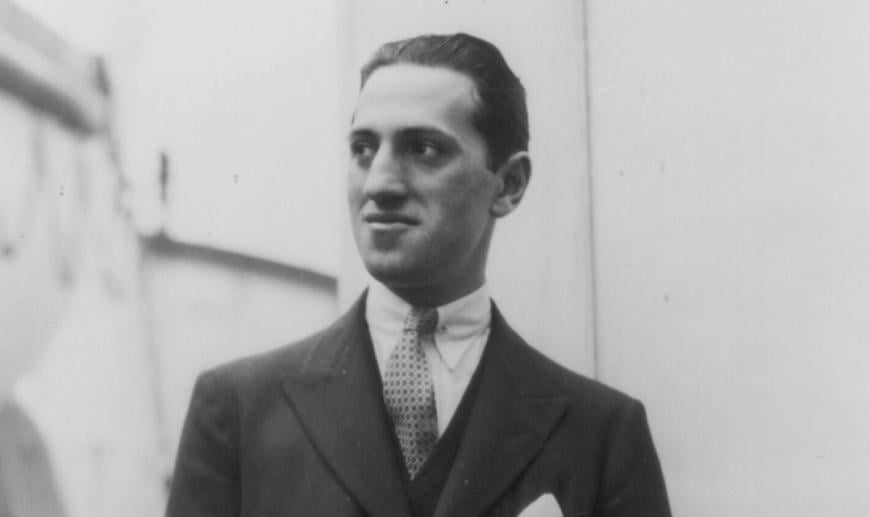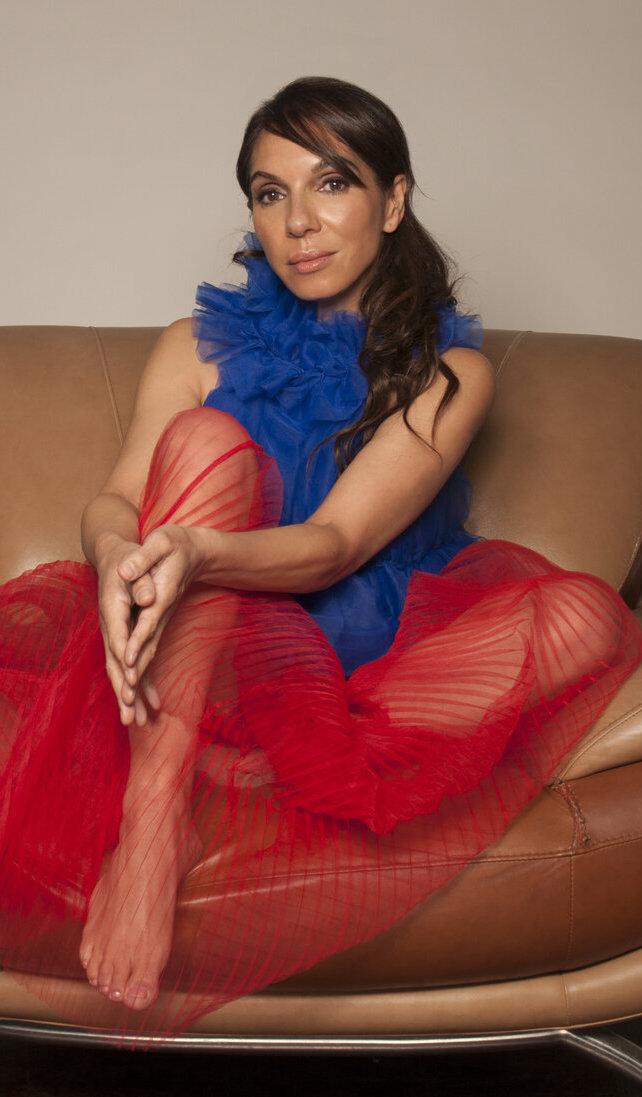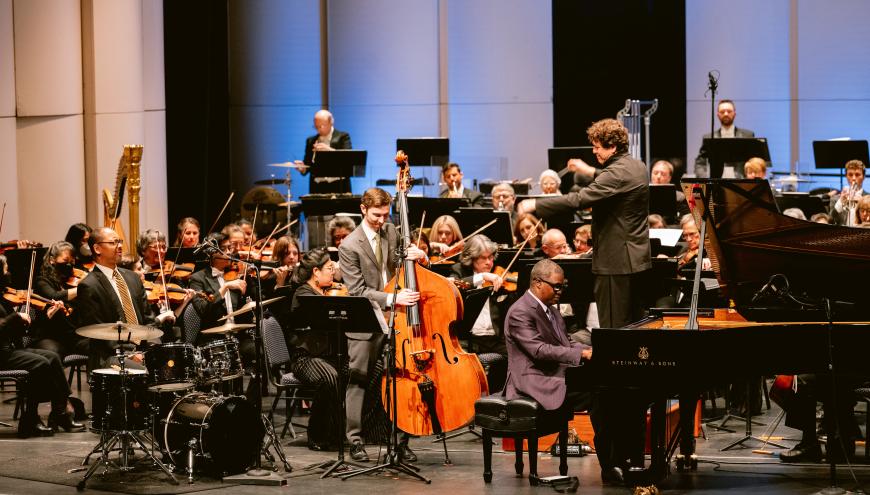
Concert presenters and journalists both love significant anniversaries. So it’s unsurprising that composer and pianist George Gershwin’s Rhapsody in Blue is enjoying time back in the spotlight — and the cultural zeitgeist — on the centennial of its premiere performance, Feb. 12, 1924, at Aeolian Hall in Manhattan.
One of the most popular and recognizable pieces in the classical repertoire, the jazz-influenced Rhapsody has never left the collective consciousness. And it’s getting some extra love in California thanks to local artists and local performances offering fresh interpretations of this work that was originally orchestrated by Ferde Grofé and billed as part of “An Experiment in Modern Music.”

Pianist, broadcaster, and educator Lara Downes’s EP Rhapsody in Blue Reimagined was released digitally on Feb. 2 by the Pentatone label and is thoroughly rooted in the Bay Area, as is Downes. The San Francisco Conservatory of Music (SFCM) owns Pentatone, and SFCM Music Director Edwin Outwater conducted members of the school’s orchestra, as well as musicians from its Roots, Jazz, and American Music (RJAM) program, for the recording. The piece’s arranger here, composer Edmar Colón, is featured on soprano saxophone.
The project had its origins at the conservatory, appropriately enough. In a phone interview, Downes recalled how she and her friend — bassist, broadcaster, and Newport Jazz Festival Artistic Director Christian McBride — were visiting with RJAM students.
“We were talking with them about these intersections that he and I both find so fascinating. ‘Where does jazz end and American concert music begin? Does it matter? And is that changing?’ And I think overnight, something in my brain formed into this focus on Rhapsody in Blue,” she said. “It’s such a great example of a place where everything comes together. So it really was born with those students in mind in an important way.”
Downes had been performing a Gershwin and Duke Ellington program with the Boston Pops in June 2022 when she connected with Colón, who had arranged the jazz standard “Caravan,” by Ellington and Puerto Rican trombonist and composer Juan Tizol, for the performance.
“He had the same idea [with ‘Caravan’] that I [would have] for Rhapsody, of taking the piece back to its roots and really enhancing the origin material and emphasizing the Caribbean percussion as a really respectful and loving revisiting,” she said. When Downes decided to commission a 100th-anniversary interpretation of Rhapsody back in April 2023, she already had him in mind as the arranger.
The pair spoke extensively by phone before she returned to Boston in the summer of 2023 to spend a full day working with Colón off of Gershwin’s first Rhapsody piano score. “We just went through it and started imagining, ‘What could this sound like? What does this represent? And where does this want to go?’
“We did have some specific ideas from the beginning,” Downes continued. “We knew we wanted to highlight its roots in jazz by going back to these percussion instruments. The interaction with the percussionists doesn’t exist in any of the original versions of the piece.
“I also went off in my nerdy little way to do research about the history, what it was like in Gershwin’s America in 1924,” she added. The Immigration Act of 1924 (aka the Johnson-Reed Act) would have been applicable to Gershwin’s parents, who were Jews who emigrated from Russia, Downes said.
“And the tone of those times, just that information really shaped the mood of the arrangement. The way that it starts, it’s not a happy-go-lucky opening like the Grofé version. It’s coming out of darkness.”
In honoring the piece’s aesthetic flexibility, the instrumentation for this arrangement is further customizable to fit local “site-specific” musical heritages. The San Francisco recording features Chinese instruments. A version this summer in Gershwin’s hometown of Brooklyn might reflect either Jewish or Puerto Rican musical traditions, Downes said.
She had performed Rhapsody before as a solo piece and also with orchestras, using a couple of different arrangements. She avoided other interpretations when she and Colón were working, however, “holding a special space for this as something new,” she said. “But I’ve heard and appreciate lots of people’s approaches, including Marcus Roberts’s. And I love Leonard Bernstein’s version.”

Roberts has been celebrating Rhapsody’s centenary in the Golden State, including with the California Symphony last month in Walnut Creek. He’s in Southern California this spring to play the piece with the Symphonic Jazz Orchestra at the Carpenter Performing Arts Center in Long Beach on May 11 and with the Santa Barbara Symphony at The Granada Theatre May 18–19. (The latter dates include a performance of Roberts’s own Rhapsody in D.)
While the acclaimed pianist and bandleader was signed to Columbia Records’ jazz division in the 1990s, he approached Peter Gelb, then president of Sony Classical, a sibling label, about the possibility of recording a new arrangement of Rhapsody in Blue. “I told him that I really wanted to bring it fully into the jazz environment,” Roberts recounted in a phone interview. Jazz was still in its early stages in 1924, he noted, and there were 70 years of development to incorporate by the time he recorded Portraits in Blue, which was released in 1996.
Roberts’s original arrangement of Rhapsody, as heard on the album (along with Gershwin’s I Got Rhythm Variations and James P. Johnson’s Yamekraw), featured him as the sole soloist. But by the turn of the century, he had expanded the soloist role to a jazz trio.
At Roberts’s Sunday afternoon performance in late January with bassist Marty Jaffe, drummer Jason Marsalis, and the California Symphony, Music Director Donato Cabrera reminded audiences that it’s perfectly all right to applaud during performances. Though Cabrera was likely referring to the breaks between movements of classical pieces, his advice was just as applicable to the three times Roberts and his trio soloed during Rhapsody.
“We’re freely improvising throughout and balancing that with the orchestra playing its part,” Roberts said. “Now I truly feel comfortable improvising on thematic material and bringing different cultural perspectives to wherever my ears take me with it. When I do the solo cadenzas, I feel absolutely no limitation as to where each cadenza can go.”
One notable performance of Roberts’s arrangement was a 2003 outdoor concert with the late Seiji Ozawa and the Berlin Philharmonic, available for streaming on Medici.tv. Roberts spoke with SF Classical Voice the day the conductor’s death was announced and had fond memories of his former collaborator:
“He had a profound influence on me. He was a real mentor to me, one who supported my work. He told me that we need a lot more pieces that bring jazz and classical music together.”

Birthed in between Roberts’s and Downes’s projects, drummer, bandleader, and scholar Anthony Brown’s six-part American Rhapsodies premiered in 2004. He originally brought the concept of incorporating Asian and other instruments into a new arrangement of Rhapsody in Blue to one of his doctoral dissertation advisors at UC Berkeley, the late composer and scholar Olly Wilson. Wilson suggested that Brown apply for a Guggenheim Fellowship, and he was awarded one for composition in 2003.
“I actually saw the original Rhapsody in Blue score at the Library of Congress, and I was thinking, ‘Yeah, I could do something with this.’ It’s written for two pianos, so it’s got all the voicings,” Brown said in a Zoom conversation from his home in the East Bay. “I had worked in a Chinese music ensemble, so I was familiar with the tunings and the tonalities. It was just a matter of figuring out which timbres would work best for the different sections.”
In addition to adding instruments such as the Japanese shakuhachi (bamboo flute) and the Chinese ehru (two-string fiddle), Brown switched the solo instrument. “While the piano was the most popular American instrument in the 1920s, the electric guitar was what American popular music was centered around in the early 21st century,” he said. Berkeley native Will Bernard was the soloist for Brown and recently shared in a Facebook post how he transcribed the piano part for electric six-string.
Brown further explained: “It took about six months just to complete the score. And then it took another couple months of rehearsals before we were able to feel it.” After a preview performance at the Oakland Asian Cultural Center, Brown and his Asian American Orchestra officially premiered the piece at Stern Grove in July 2004.
“Thousands of people heard it that afternoon, and all my professors [from UC Berkeley] came to check it out. So I was really grateful for that,” he recalled. “And I remember when we first performed it, people were astounded. Nobody had ever heard that mixture of instrumentation.”
The piece was recorded by Anthony Brown’s Orchestra as the title tracks for Rhapsodies, which was released in 2005. “It wasn’t my biggest project, but it was probably the most unusual,” Brown said.
New arrangements of Rhapsody may lead back to Roberts this year, but he says his contribution is just part of a larger conversation. “It really reflects where I would love to see America go, where you collaborate with and listen to people who you don’t normally work with,” the pianist concluded. “And democracy in general can only be sustained through a similar unity, by listening to and compromising with others who don’t think or look like you.”
Further Live Listening and Learning
Broadcaster, composer, and educator Rob Kapilow continues his lively What Makes It Great? lecture and performance series at Stanford’s Bing Concert Hall on April 25 with an examination of the seldom-heard original 1924 arrangement of Rhapsody. Elizabeth Schumann, winner of the 2007 Bösendorfer International Piano Competition and director of keyboard studies in Stanford’s Department of Music, will join the NPR Performance Today commentator for his colorful concert presentation.
Under the baton of Francesco Lecce-Chong, pianist and composer Conrad Tao and the Santa Rosa Symphony will perform an Ellington and Gershwin program at Sonoma State’s Green Music Center May 11–13 that includes both the jazz-band version of Rhapsody and the world premiere of Tao’s Concerto for Piano and Jazz Band.
And Jean-Yves Thibaudet is the piano soloist for an all-Gershwin program, including Rhapsody, with conductor Lionel Bringuier and the Los Angeles Philharmonic at the Hollywood Bowl on July 11.




